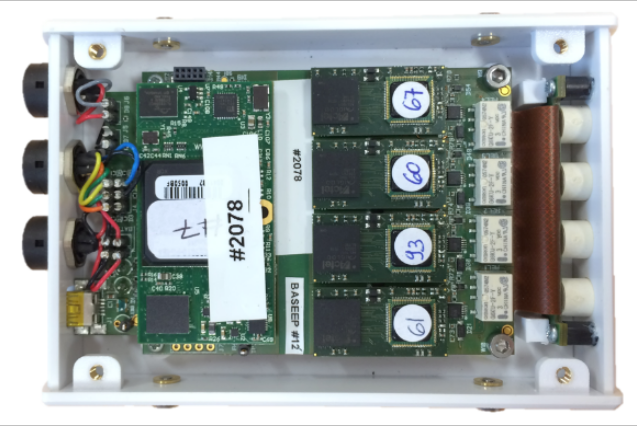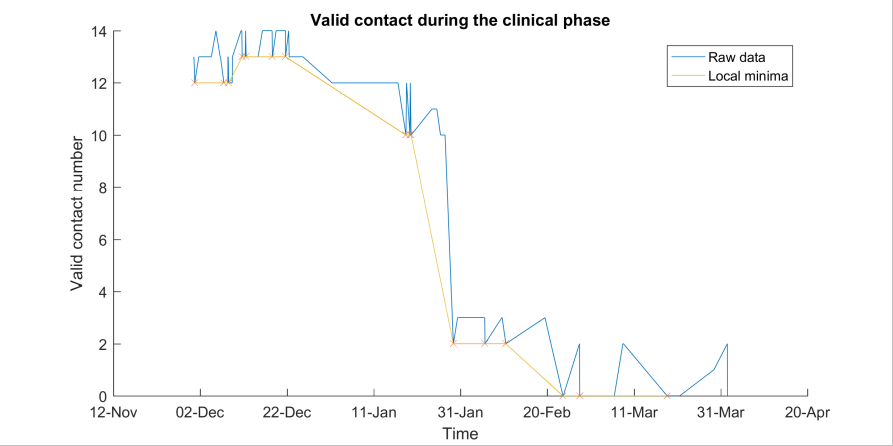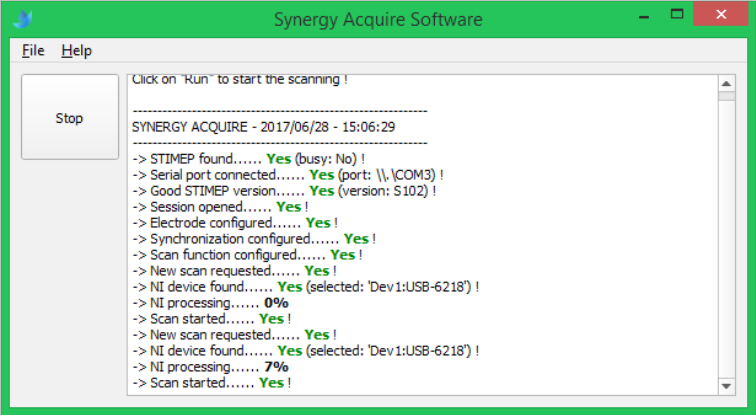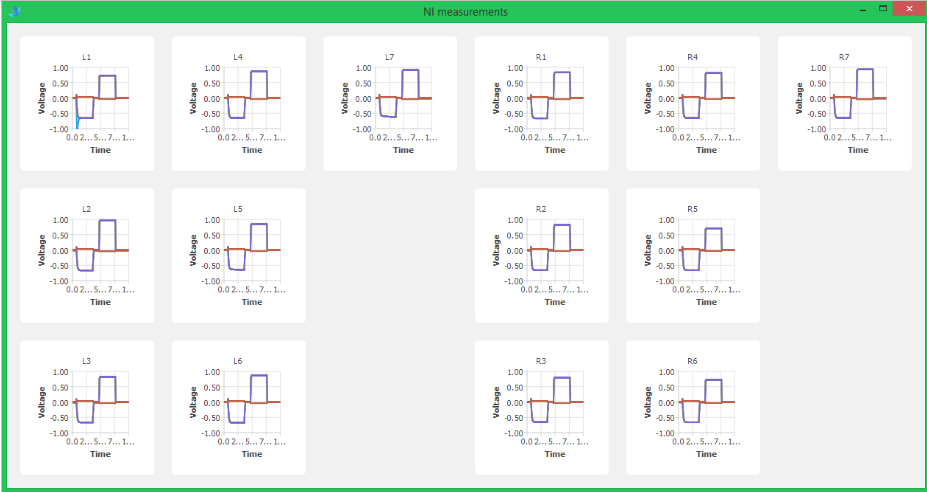Section: New Results
Sensory feedback for phantom limb pain modulation
Participants : Arthur Hiairrassary, David Andreu, Christine Azevedo Coste, Thomas Guiho, David Guiraud.
In the EPIONE european project, the partners UM and MXM-OBELIA are responsible for the design and manufacturing of the STIMEP stimulator (see figure 1) and in charge of all the software and the experimental follow-up.
During the first round, we were able to quantify the state of each contact of each electrode to prevent misinterpretation of feedback sensation. Indeed, if the patient does not feel anything while stimulating, impedance check may show that it is due to a contact failure and not to a lack of nerve response.
This estimation was done during the “Contacts Check” functionality embedded in the STIMEP. At the same time, a more detailed measure was stored in the STIMEP (but only reachable off-line for further investigation).
For instance, the following figure shows the number of valid contacts during the clinical phase of the 4 TIME-4H electrodes computed by the “Contacts Check” functionality. The electrodes stand almost OK up to February-March on this example (2-3 months) then failures begin to occur.
However, these data were not detailed enough so we decided to develop an easy to use software able to control automatically in the same time the STIMEP and the acquisition card (NI-6218). It performed voltage and current measurements to follow and to assess the complex impedance evolution of the TIME-4H in vivo. This software, named “Synergy Acquire” (Figure 3), was used by the clinic of Roma with the second patient.
Synergy Acquire performs safe, really quick stimulation and measurement on an electrode (around 1 minute, less than 5 minutes for the 4 TIME-4H, figure 4), which allow a very regular follow-up (2-3 times by week) by the practitioners. Data were logged, sent to us, processed and then sent back to UCSC for checking. This work is related to clinical trials follow-up. In conclusion, within this project that ended in August, we developed software (following 62304 class B regulation), test in animals, used in humans and we processed all the data





